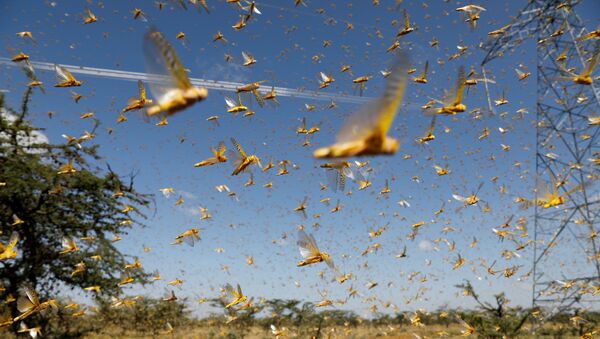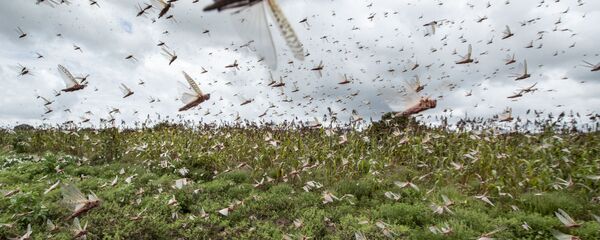Two new generations of locusts are expected to infest East Africa by June, with the existing population of insects increasing by four hundred times, Quartz Africa reported, citing scientists observing the situation closely.
The locust plague, which originated in Arabian Peninsula in 2018, has been devastating the region since last June, by consuming crops in Kenya, Uganda, Somalia, Ethiopia, Sudan and other East African countries. Triggered by heavy rains and thriving vegetation, the situation has been especially devastating in Kenya, where locusts are estimated to have destroyed at least 30% of grassland since the early months of 2020. They have also been laying a lot of eggs, which have started to crack open since February, and the new generation of pests has started to grow in size to begin attacking Kenyan land.
“That’s what’s been happening in Kenya this past month. More and more of those hoppers have become adults. So, these are Made in Kenya”, explains Keith Cressman, a United Nations Food and Agriculture Organization’s (UN FAO) senior locust forecaster.

Just in a week or so, the new generation of locusts will start to lay their own eggs and that’s when the situation is expected to get even worse. Experts believe that nearly a hundred percent of crops of barley, beans and maize could be consumed by the pests in the upcoming months, leaving the local communities to starve. The swarms can still be controlled with the help of pesticides, food experts argue, until they are pushed further north by a dry season this summer.





